Living in a Filipino household where everyone has their own version of Sweet and Sour Pork (Matamis-Asim na Baboy), I can't tell you how many times I've struggled to achieve that perfect restaurant-style crunch and sauce balance.
After countless experiments and some wisdom from my Lola, I finally cracked the code to making this Chinese-Filipino favorite that rivals any lauriat place. This sweet and sour pork recipe transforms simple liempo into crispy, tender bites of heaven, coated in that signature sweet-tangy sauce that will have your family scraping their plates clean.
Once you master this easy recipe, your siblings will stop ordering takeout and start inviting themselves over for dinner instead.
Jump to:
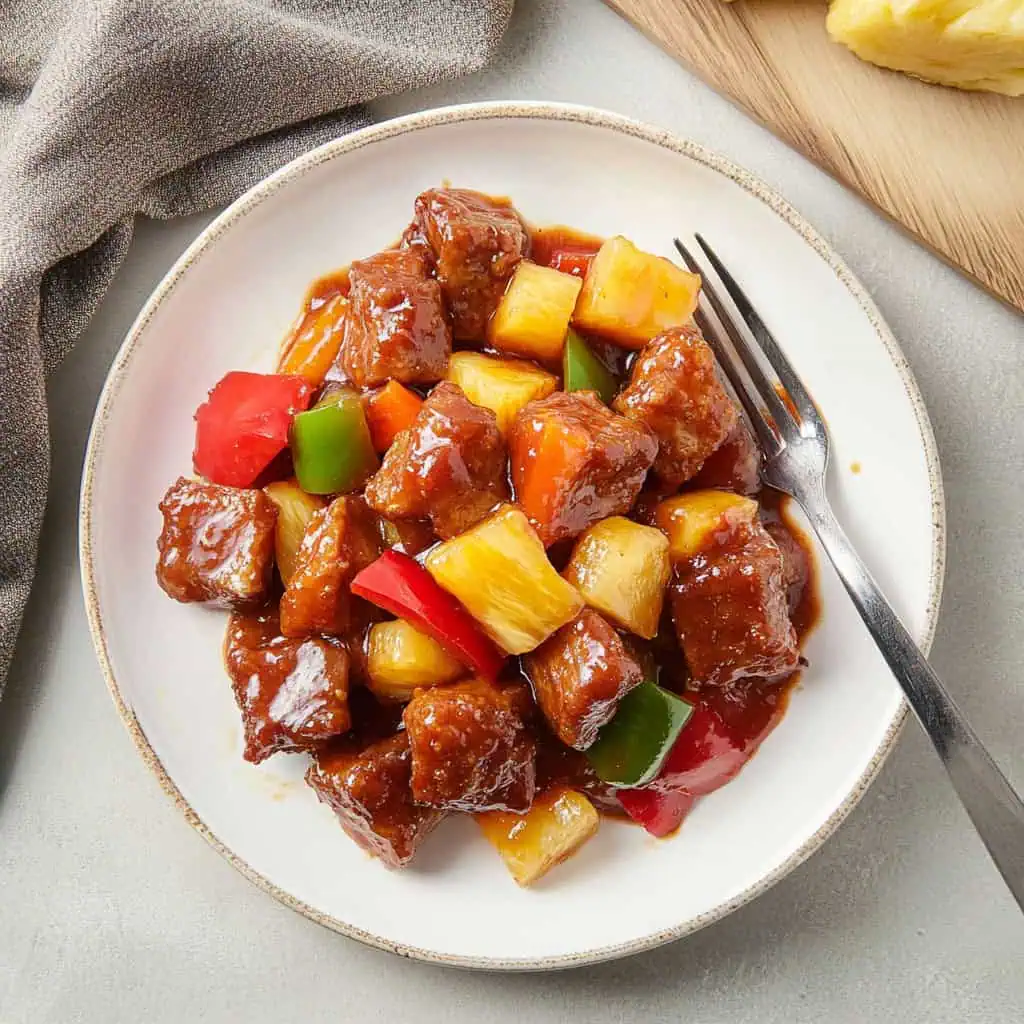
Why You'll Love This Recipe
- Perfect Texture Contrast: Incredibly crispy exterior gives way to juicy, tender pork inside
- Balanced Flavors: The sauce hits all the right notes - sweet, sour, and savory
- Make-Ahead Friendly: Components can be prepared in advance
- Restaurant Quality: Achieve authentic Chinese restaurant results at home
- Family Favorite: A crowd-pleasing dish that impresses both kids and adults
Ingredients
The ingredients in this recipe are carefully chosen to create the perfect balance of flavors and textures. Pork tenderloin provides a tender base that crisps beautifully when fried, while the marinade of soy sauce and Chinese cooking wine adds depth and umami.
The cornstarch-flour coating creates that signature crunch that stands up to the sauce. In the sauce itself, pineapple juice brings natural sweetness and acidity, balanced by rice vinegar's tang and brown sugar's caramel notes.
The colorful bell peppers and pineapple chunks add fresh contrast to the fried meat, creating a dish where every element serves an essential purpose.
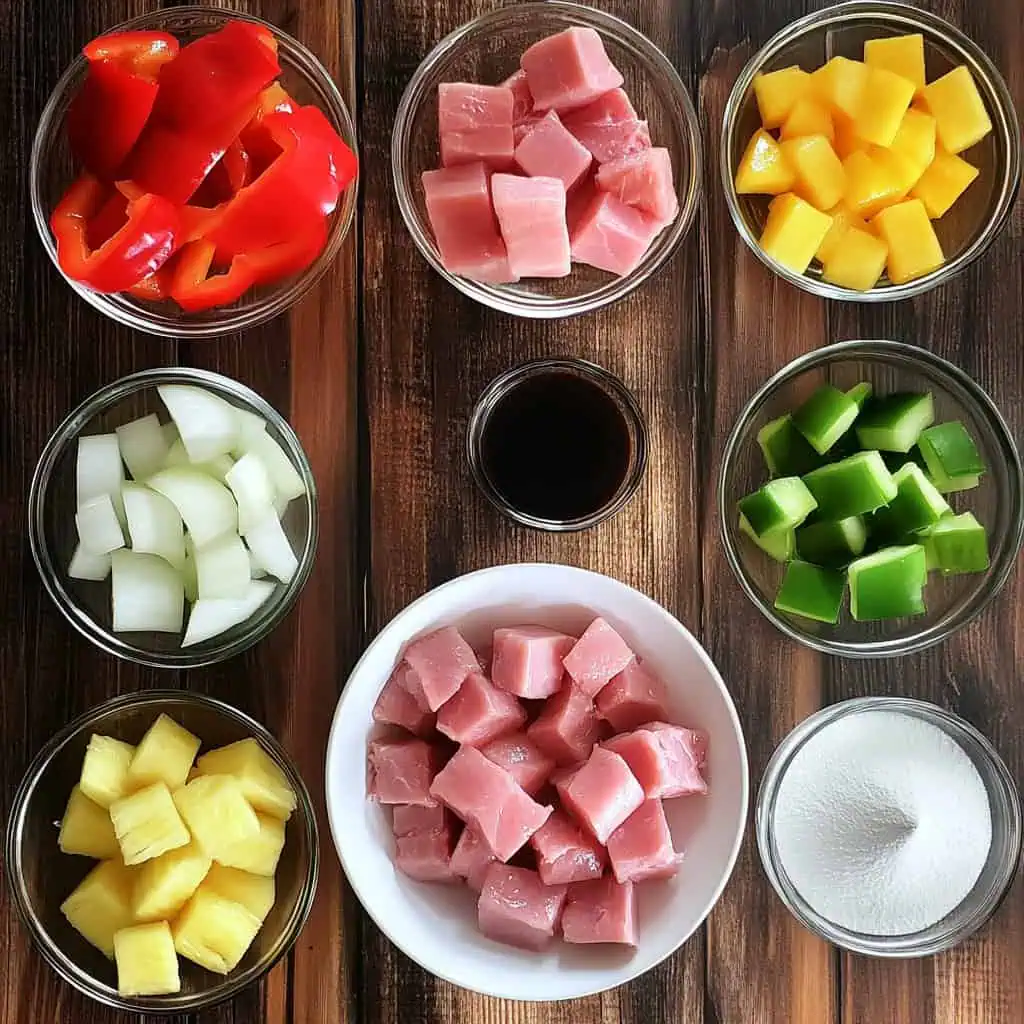
For the Pork Marinade:
- 1 pound pork tenderloin (litson kawali), cut into 1-inch cubes
- 2 tablespoons soy sauce (toyo)
- 1 tablespoon Chinese cooking wine (Xiaoxing wine)
- ½ teaspoon ground black pepper (dinurog na paminta)
For the Coating:
- ½ cup all-purpose flour (arina)
- ½ cup cornstarch (corn starch)
- 1 teaspoon salt (asin)
- ½ teaspoon white pepper (puting paminta)
For the Sauce (Sarsa):
- 1 cup pineapple juice (katas ng pinya)
- ½ cup rice vinegar (suka)
- ¼ cup ketchup (ketsap)
- ½ cup brown sugar (maskobado)
- 1 teaspoon salt (asin)
- 1 tablespoon cornstarch (corn starch)
For the Vegetables:
- ½ red bell pepper (pulang bell pepper), cut into chunks
- ½ green bell pepper (berdeng bell pepper), cut into chunks
- 1 small onion (sibuyas), sliced thinly
- 1 cup pineapple chunks (pinya)
- Canola oil for frying
Equipment
- Deep, heavy-bottomed pan or wok - Essential for maintaining steady oil temperature during frying; prevents hot spots that can burn the pork
- Cooking thermometer - Critical for achieving the precise oil temperatures needed for the double-frying technique (325°F first fry, 350°F second fry)
- Paper towels and wire rack - Creates the perfect draining system to ensure maximum crispiness
- Tongs - Allows safe handling of pork pieces during frying without piercing and losing juices
- Slotted spoon - Helps remove pork pieces while leaving excess oil behind
- Mixing bowls (various sizes) - Needed for marinating pork and preparing sauce separately
- Whisk - Creates a smooth, lump-free sauce
- Sharp knife and cutting board - For uniform cutting of pork and vegetables, ensuring even cooking
- Measuring cups and spoons - Precision is key for the perfect sauce balance
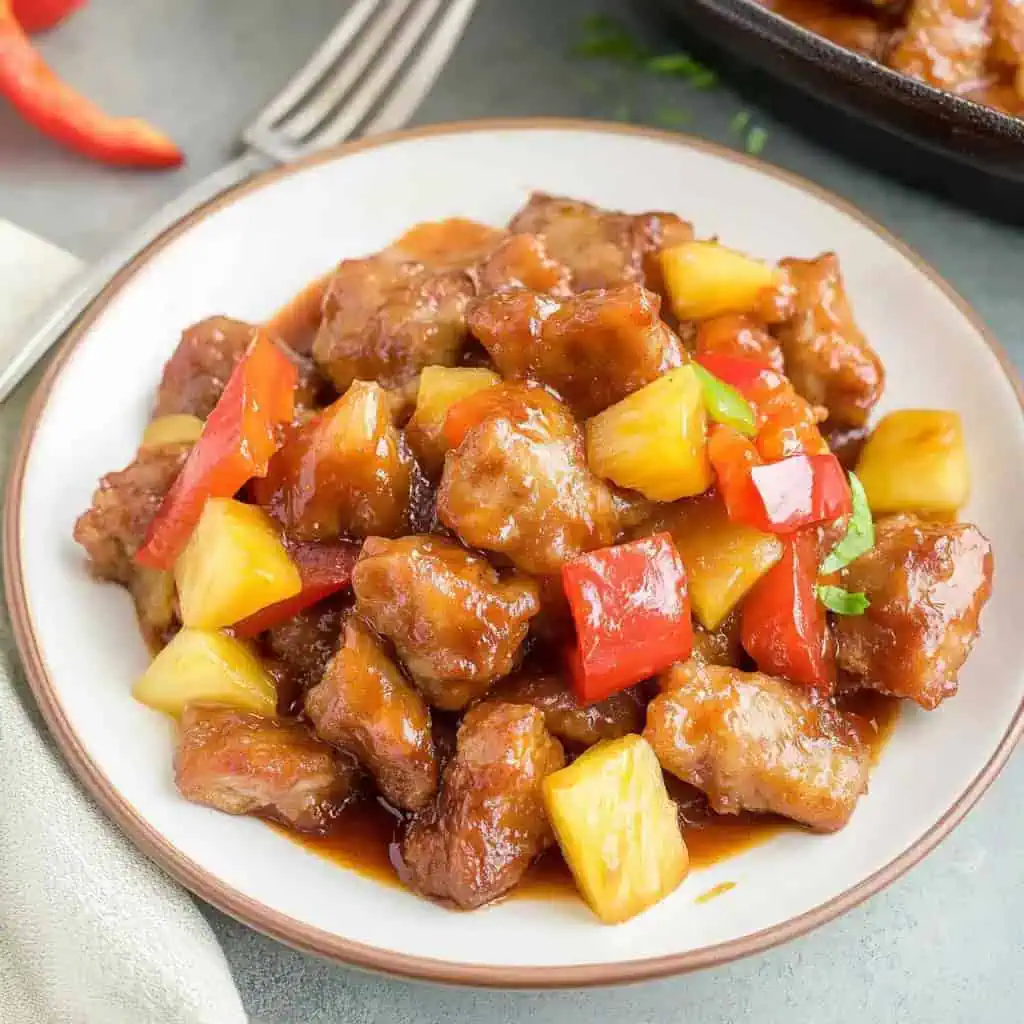
How To Make
- Marinate the pork: Combine pork cubes, soy sauce (toyo), Chinese cooking wine, and black pepper in a bowl. Mix thoroughly to coat each piece evenly. Let marinate at room temperature for 30 minutes for quick preparation, or refrigerate for up to 4 hours for deeper flavor. If refrigerated, remember to remove from the fridge 30 minutes before cooking to bring the meat to room temperature.
- Prepare the sauce: While the meat marinates, whisk together pineapple juice (katas ng pinya), rice vinegar (suka), ketchup, brown sugar (asukal na pula), salt (asin), and cornstarch in a medium bowl until completely smooth with no lumps. The cornstarch is crucial here as it will thicken the sauce to the perfect consistency. Set aside.
- Dry the meat thoroughly: After marinating, drain the pork well and pat each piece meticulously dry with paper towels. This step is absolutely essential for achieving that restaurant-quality crispiness, any excess moisture will prevent proper crisping.
- Prepare the coating: Mix your coating ingredients in a shallow dish: all-purpose flour (harina), cornstarch (corn starch), salt (asin), and white pepper. The combination of flour and cornstarch creates the perfect crispy exterior. Take each piece of marinated pork and coat it thoroughly, shaking off any excess (Alisin ang sobrang harina). Place the coated pieces on a clean plate, ensuring they don't touch each other.
- First fry at lower temperature: Heat your oil in your deep, heavy-bottomed pan or wok to exactly 325°F (163°C). Use enough oil to fully submerge the pork pieces. Working in small batches to maintain oil temperature, carefully add several pieces of coated pork to the hot oil. Fry for 3-4 minutes until light golden. This first fry cooks the pork through while setting the coating. Remove and place on paper towels to drain. Continue until all pork pieces have had their first fry.
- Second fry at higher temperature: Increase your oil temperature to 350°F (175°C). This critical second frying creates that signature ultra-crispy exterior. Return the pork pieces to the hot oil in batches and fry for an additional 2-3 minutes until deeply golden brown and audibly crispy. Remove to fresh paper towels.
- Prepare the vegetables: In a clean wok or large pan, heat 1 tablespoon of oil over medium-high heat. Add your sliced onions (sibuyas) and bell peppers. Stir-fry for just 30 seconds, they should begin to soften but remain crisp. This quick cooking preserves their fresh texture and color.
- Finish the sauce: Pour your prepared sauce mixture into the pan with the vegetables and bring to a boil, stirring constantly to prevent lumps. Cook until the sauce thickens and becomes glossy, about 2-3 minutes. Add the pineapple chunks and cook for another 30 seconds, just long enough to warm them through without making them mushy.
- Combine or serve separately: For immediate serving, add the crispy pork to the pan and quickly toss to coat with the sauce. Use a gentle folding motion to maintain the crispy coating. If you plan to serve later, keep the sauce and pork separate until the last moment to preserve maximum crispiness.
- Serve: Present immediately over hot steamed rice (mainit na kanin). The contrast between the crispy-sweet pork and plain rice creates the perfect bite.

Tips from Lola's Kitchen
- The double-dry technique: After patting pork dry, let it air dry for 5 additional minutes before coating for maximum crispiness
- Oil temperature secrets: Maintain precise oil temperatures—too low makes greasy pork, too high burns the coating before cooking the meat
- Cornstarch ratio: The 50/50 flour-cornstarch ratio is critical for that authentic crunch that holds up to the sauce
- Fresh ingredients impact: Use freshly cut pineapple and squeeze your own juice for brighter, more authentic flavor
- Sauce consistency check: The perfect sauce should coat the back of a spoon but still flow slowly when tilted
- Protect the crunch: Always sauce the pork right before serving, never in advance
Substitutions
- Pork tenderloin → Pork belly (liempo) - For a richer, more indulgent version with more fat content and flavor
- Pork tenderloin → Chicken breast - For a lighter option that's still delicious; reduce first fry time to 2-3 minutes
- Chinese cooking wine → Dry sherry - Provides similar depth of flavor when Xiaoxing wine is unavailable
- Chinese cooking wine → Rice wine vinegar with a pinch of sugar - Creates a balanced alternative that mimics the wine's flavor profile
- Fresh pineapple → Canned pineapple - More convenient option; drain thoroughly and reduce added sugar in the sauce by 1 tablespoon
- Rice vinegar → Apple cider vinegar - Offers a similar mild acidity; reduce amount by 1 tablespoon
- Rice vinegar → White vinegar - More assertive; use only ⅓ cup and increase sugar by 1 tablespoon to balance
- Brown sugar → White sugar with a touch of molasses - Creates the same caramel notes; use 1 teaspoon molasses per ½ cup sugar
- Bell peppers → Carrots and snow peas - For a different vegetable mix that still provides color and crunch
Troubleshooting
Problem: Pork isn't crispy enough
Solution: Ensure you've thoroughly dried the pork before coating. Check that your oil is hot enough (350°F for second fry). Don't overcrowd the pan, which lowers oil temperature. Consider a third quick fry (15 seconds) right before serving for extra crispiness.
Problem: Sauce is too thick
Solution: Add water or pineapple juice one tablespoon at a time, whisking constantly until desired consistency is reached. Reheat briefly to ensure cornstarch is fully activated.
Problem: Sauce is too thin
Solution: Mix 1 teaspoon cornstarch with 2 teaspoons cold water to create a slurry. Add gradually to simmering sauce while whisking until desired thickness is achieved.
Problem: Sauce is too sour
Solution: Add more brown sugar gradually, 1 tablespoon at a time, tasting between additions. A pinch of baking soda can also neutralize excessive acidity.
Problem: Sauce is too sweet
Solution: Add more vinegar gradually, 1 teaspoon at a time, or add a squeeze of fresh lemon or calamansi juice for brightness without altering the sauce consistency.
Problem: Pork is tough or dry
Solution: Ensure you're not overcooking—the first fry should be just enough to cook through, while the second is for crisping the exterior. Consider brining the pork before marinating (2 tablespoons salt in 2 cups water for 30 minutes).
Storage & Reheating
Refrigerating
- Pork: Store fried pork pieces in an airtight container, separated by parchment paper to prevent sticking, for up to 3 days.
- Sauce: Refrigerate sauce separately in an airtight container for up to 5 days.
- Vegetables: If you have extra uncooked vegetables, store them separately for freshness.
Freezing
- Uncoated marinated pork: Can be frozen for up to 2 months in a freezer-safe bag. Thaw overnight in refrigerator before coating and frying.
- Fried pork: Not recommended for freezing as it loses crispiness.
- Sauce: Can be frozen in ice cube trays then transferred to freezer bags for up to 3 months. Thaw and reheat thoroughly.
Reheating
- Crispy pork revival: Place refrigerated fried pork on a wire rack over a baking sheet in a 350°F oven for 5-7 minutes until heated through and re-crisped. For even better results, use an air fryer at 375°F for 3-4 minutes.
- Sauce rejuvenation: Reheat sauce in a small saucepan over medium heat, whisking occasionally. If too thick after refrigeration, add 1-2 tablespoons of water or pineapple juice.
- Complete dish: Reheat components separately, then combine just before serving for the freshest taste and texture.
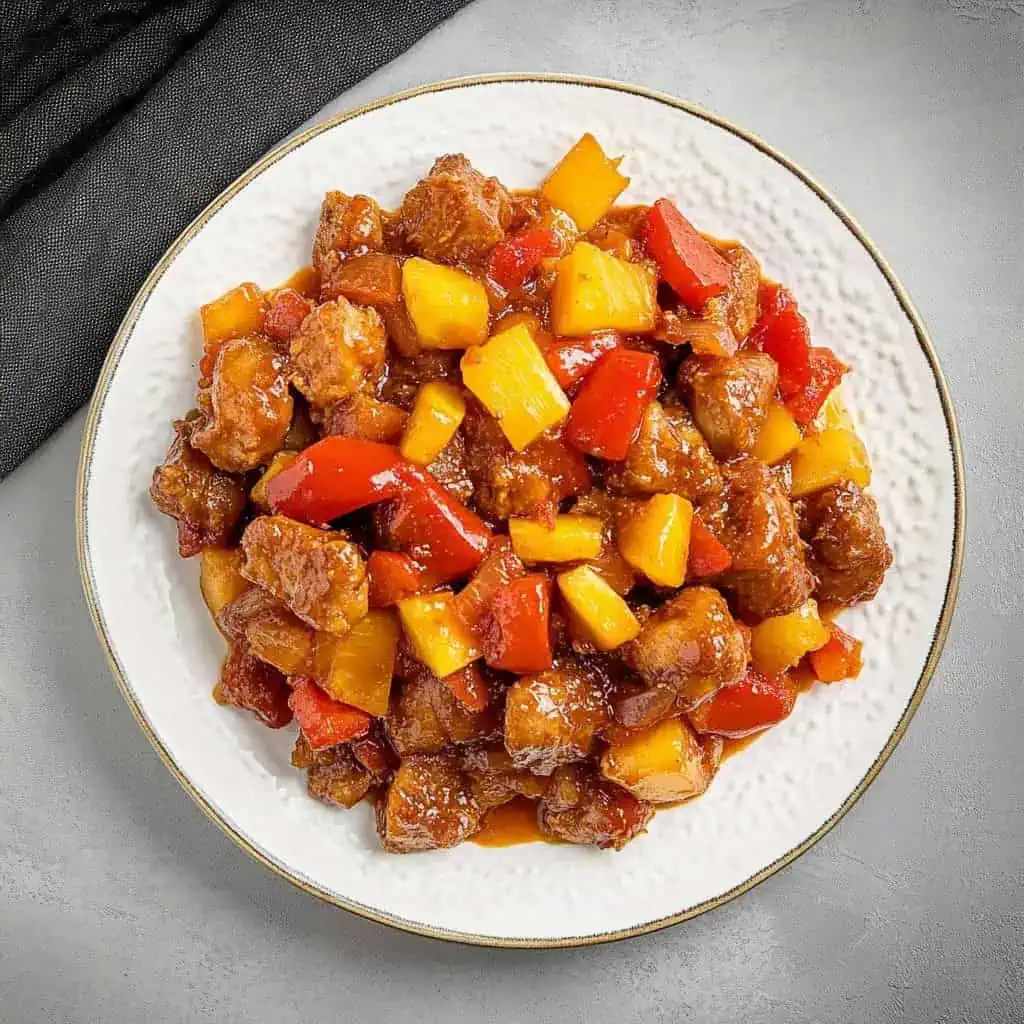
FAQ
Can I prepare this dish in advance for a party?
Yes, but for best results, keep the components separate until serving time. Fry the pork up to 4 hours ahead and keep at room temperature (do not refrigerate if serving the same day). Reheat in a 350°F oven for 5 minutes before tossing with the sauce, which can be made in advance and reheated.
Why isn't my pork getting crispy enough?
The most common reasons are: insufficient drying before coating, oil not hot enough, or overcrowding the pan. Make sure each piece is thoroughly dried, maintain precise oil temperatures (use a thermometer), and fry in small batches. The double-fry technique is essential, don't skip it!
Can I use this recipe with chicken, tofu, or shrimp instead?
Absolutely! For chicken breast, follow the same process but reduce the first fry time to 2-3 minutes. For tofu, use extra-firm tofu, press well to remove moisture, and reduce both fry times by 1 minute. For shrimp, coat and fry for just 2 minutes total (skip the double-fry)—the sauce preparation remains the same.
Is this recipe gluten-free or can it be made gluten-free?
The traditional recipe contains gluten in the soy sauce, flour, and possibly the cooking wine. For a gluten-free version, substitute tamari for soy sauce, rice flour for all-purpose flour (keep the cornstarch), and ensure your cooking wine is gluten-free or substitute with rice vinegar with a pinch of sugar.
How spicy is the traditional version of this dish?
The authentic recipe isn't spicy at all—it focuses on the sweet-sour balance. However, heat can be added easily with fresh chilies, chili sauce, or red pepper flakes to taste. In some regions of the Philippines, a little heat is welcome to cut through the sweetness.
What's the best rice to serve with Sweet and Sour Pork?
Traditional jasmine rice (kanin) is ideal as its subtle aroma complements without competing with the bold sauce. For a healthier option, brown jasmine rice works well too. Some families serve it with plain rice and pancit canton on the side for a complete meal.
Can I reduce the sugar without affecting the dish?
Yes, you can reduce the sugar by up to 25% (using ⅜ cup instead of ½ cup). Balance by slightly reducing the vinegar to ⅓ cup. For a natural alternative, substitute 3 tablespoons of honey for ¼ cup of the brown sugar.
How do restaurants keep the pork crispy even when coated in sauce?
Professional kitchens keep the fried pork and sauce separate until the very last moment before serving. They also use higher frying temperatures and often add a small amount of baking powder to the coating for extra crispiness. Follow the double-fry technique in this recipe for similar results at home.
Related
Looking for other recipes like this? Try these:

Sweet and Sour Pork (Matamis-Asim na Baboy)
Ingredients
For the Pork Marinade:
- 1 pound pork tenderloin litson kawali, cut into 1-inch cubes
- 2 tablespoons soy sauce toyo
- 1 tablespoon Chinese cooking wine Xiaoxing wine
- ½ teaspoon ground black pepper dinurog na paminta
For the Coating:
- ½ cup all-purpose flour arina
- ½ cup cornstarch corn starch
- 1 teaspoon salt asin
- ½ teaspoon white pepper puting paminta
For the Sauce (Sarsa):
- 1 cup pineapple juice katas ng pinya
- ½ cup rice vinegar suka
- ¼ cup ketchup ketsap
- ½ cup brown sugar maskobado
- 1 teaspoon salt asin
- 1 tablespoon cornstarch corn starch
For the Vegetables:
- ½ red bell pepper pulang bell pepper, cut into chunks
- ½ green bell pepper berdeng bell pepper, cut into chunks
- 1 small onion sibuyas, sliced thinly
- 1 cup pineapple chunks pinya
- Canola oil for frying
Instructions
- Combine pork cubes, soy sauce (toyo), Chinese cooking wine, and black pepper in a bowl. Mix well and let marinate at room temperature for 30 minutes or up to 4 hours in the refrigerator. If refrigerated, remove from the fridge 30 minutes before cooking to bring to room temperature.
- While the meat marinates, prepare your sauce. In a medium bowl, whisk together pineapple juice (katas ng pinya), rice vinegar (suka), ketchup, brown sugar (asukal na pula), salt (asin), and cornstarch until smooth and well combined. Set this aside.
- After marinating, drain the pork well and pat each piece thoroughly dry with paper towels (Patuyuin ng mabuti gamit ang paper towel). This step is crucial for achieving crispy pork.
- Mix your coating ingredients in a shallow dish: all-purpose flour (harina), cornstarch (corn starch), salt (asin), and white pepper. Take each piece of marinated pork and coat it thoroughly in the flour mixture, shaking off any excess (Alisin ang sobrang harina). Place the coated pieces on a clean plate.
- Heat your oil in a deep, heavy-bottomed pan or wok to 325°F (163°C). Use enough oil to submerge the pork pieces. While waiting for the oil to heat, prepare a plate lined with paper towels for draining.
- Once the oil reaches temperature, begin your first fry. Work in batches, carefully adding several pieces of coated pork to the hot oil (Mag-prito ng kaunti lang kada batch). Fry for 3-4 minutes until light golden. Remove and place on the paper towel-lined plate. Continue until all pork is fried once.
- Increase your oil temperature to 350°F (175°C). This second frying will create the ultimate crispy exterior. Return the pork pieces to the hot oil in batches and fry for an additional 2-3 minutes until deeply golden brown and crispy (Iprito muli hanggang maging golden brown at malutong). Remove to fresh paper towels.
- In a clean wok or large pan, heat 1 tablespoon of oil over medium-high heat. Add your sliced onions (sibuyas) and bell peppers. Stir-fry for 30 seconds until just starting to soften but still crisp (Igisa hanggang malambot-lambot).
- Pour in your prepared sauce mixture and bring to a boil, stirring constantly. Cook until the sauce thickens and becomes glossy, about 2-3 minutes (Lutuin hanggang lumapot ang sarsa). Add the pineapple chunks and cook for another 30 seconds.
- For serving immediately, add the crispy pork to the pan and quickly toss to coat with the sauce. If you plan to serve later, keep the sauce and pork separate until ready to eat.
- Serve immediately over hot steamed rice (mainit na kanin). For best results, the pork should be sauced just before eating to maintain maximum crispiness.
- To store leftovers, keep the sauce and pork separate in airtight containers in the refrigerator for up to 3 days. When reheating, warm the pork in a 350°F (175°C) oven for 5-7 minutes until crispy again, and heat the sauce separately in a microwave or on the stovetop until bubbling.
- Remember: The key to perfect sweet and sour pork is maintaining the crispiness of the meat while balancing it with the tangy-sweet sauce. Don't let the pork sit in the sauce too long before serving.
Tips from Lola's Kitchen
- Pat the pork dry thoroughly before coating to ensure maximum crispiness
- Double-fry the pork for extra crunchiness: first at 325°F, then at 350°F
- Don't overcrowd the pan when frying to maintain oil temperature
- For best results, use fresh pineapple juice instead of canned
- Keep sauce separate if serving later to maintain the pork's crispiness
Nutrition
The Story Behind Sweet and Sour Pork (Matamis-Asim na Baboy)
Sweet and sour pork, known locally as Matamis-Asim na Baboy, tells a fascinating story of cultural fusion that spans centuries of Filipino-Chinese culinary history. This beloved dish traces its origins to the Cantonese regions of China, where it was known as "Gu Lou Yuk" (咕噜肉), before finding its way into Filipino kitchens through Chinese immigrants who settled in the Philippines during the Spanish colonial period.
In the bustling streets of Binondo, Manila's historic Chinatown and the world's oldest Chinatown district, sweet and sour pork emerged as a staple in local panciterias (traditional noodle houses). These establishments, which first appeared in the late 19th century, became cultural bridges where Filipino families were introduced to Chinese culinary traditions. The dish quickly captured Filipino palates with its perfect balance of flavors – a harmony that reflected the blending of two rich culinary heritage.
What makes the Filipino adaptation of sweet and sour pork unique is its distinctive approach to sauce consistency and flavor balance. While the original Cantonese version typically features a thicker sauce, the Filipino-Chinese interpretation offers a lighter coating that allows the crispy texture of the pork to shine through. Local cooks often incorporate calamansi instead of traditional lemons, and some regions even add a hint of banana ketchup – a uniquely Filipino twist that emerged during World War II.
The evolution of this dish in Filipino homes showcases our culture's talent for adaptation. Traditional Chinese cooking wine might be replaced with suka iloko (sugar cane vinegar) in northern regions, while Visayan versions might incorporate a touch of local palm vinegar. These regional adaptations have transformed a Chinese classic into something distinctively Filipino, while maintaining the dish's essential character.
Today, sweet and sour pork holds a special place in Filipino celebrations, from family Sunday lunches to grand fiestas. It's a dish that represents the successful marriage of Chinese cooking techniques with Filipino flavor preferences – crispy, tender pork pieces glazed in a sauce that perfectly balances sweetness and tanginess, complemented by the crunch of fresh vegetables and the bright acidity of pineapple.
Modern Filipino home cooks continue to put their own spin on this classic, with some using air fryers for a healthier version or incorporating local ingredients like green mangoes for extra sourness. Yet the essence remains the same: achieving that perfect balance of textures and flavors that has made sweet and sour pork a beloved fixture in Filipino-Chinese cuisine for generations.
The dish's enduring popularity in Filipino households speaks to our culture's appreciation for food that tells a story – one of cultural exchange, adaptation, and the warm embrace of foreign influences that have enriched our culinary landscape. Whether served in humble carinderias or upscale restaurants, sweet and sour pork remains a testament to the beautiful fusion of Filipino and Chinese culinary traditions.
Remember: The secret to perfect sweet and sour pork isn't just in the sauce—it's in achieving that delicate balance where the pork stays crispy even after being tossed in the sauce, and each piece carries just the right amount of that addictive sweet-sour glaze.
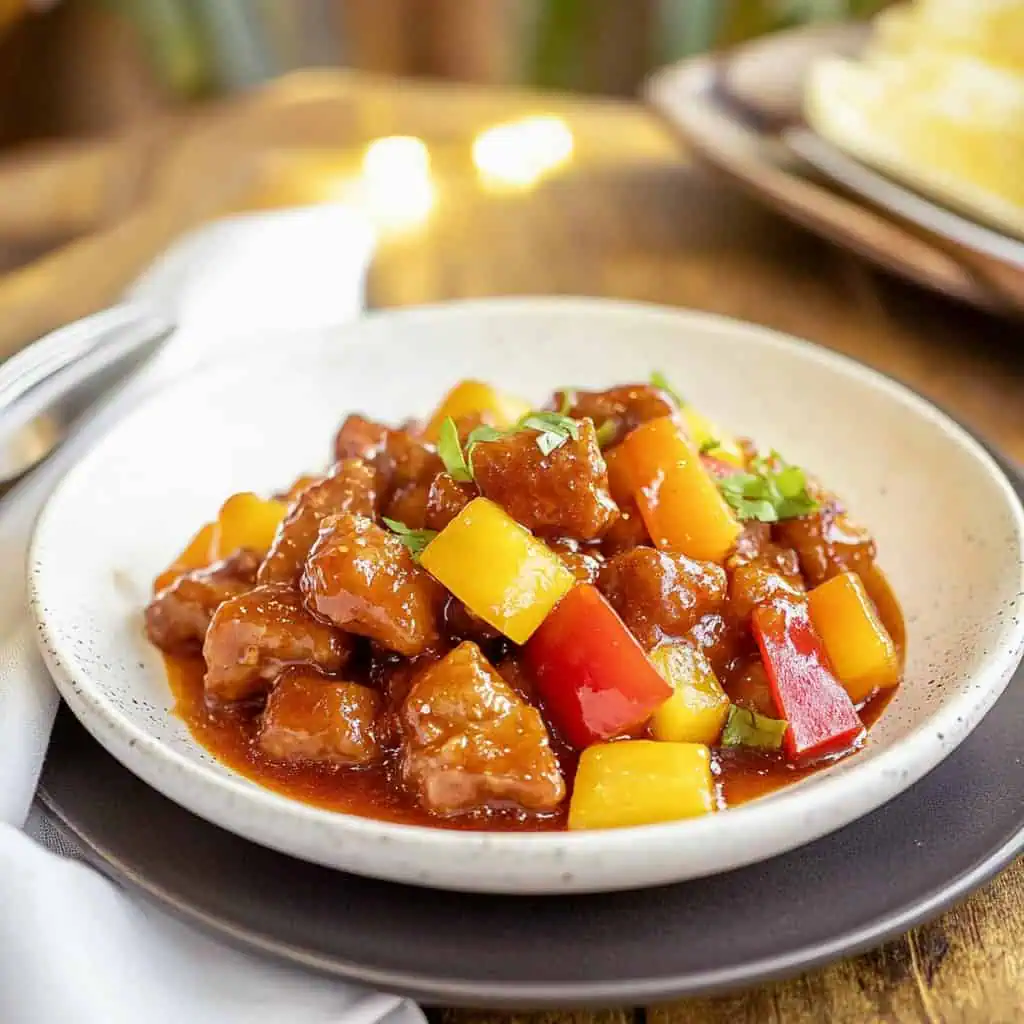

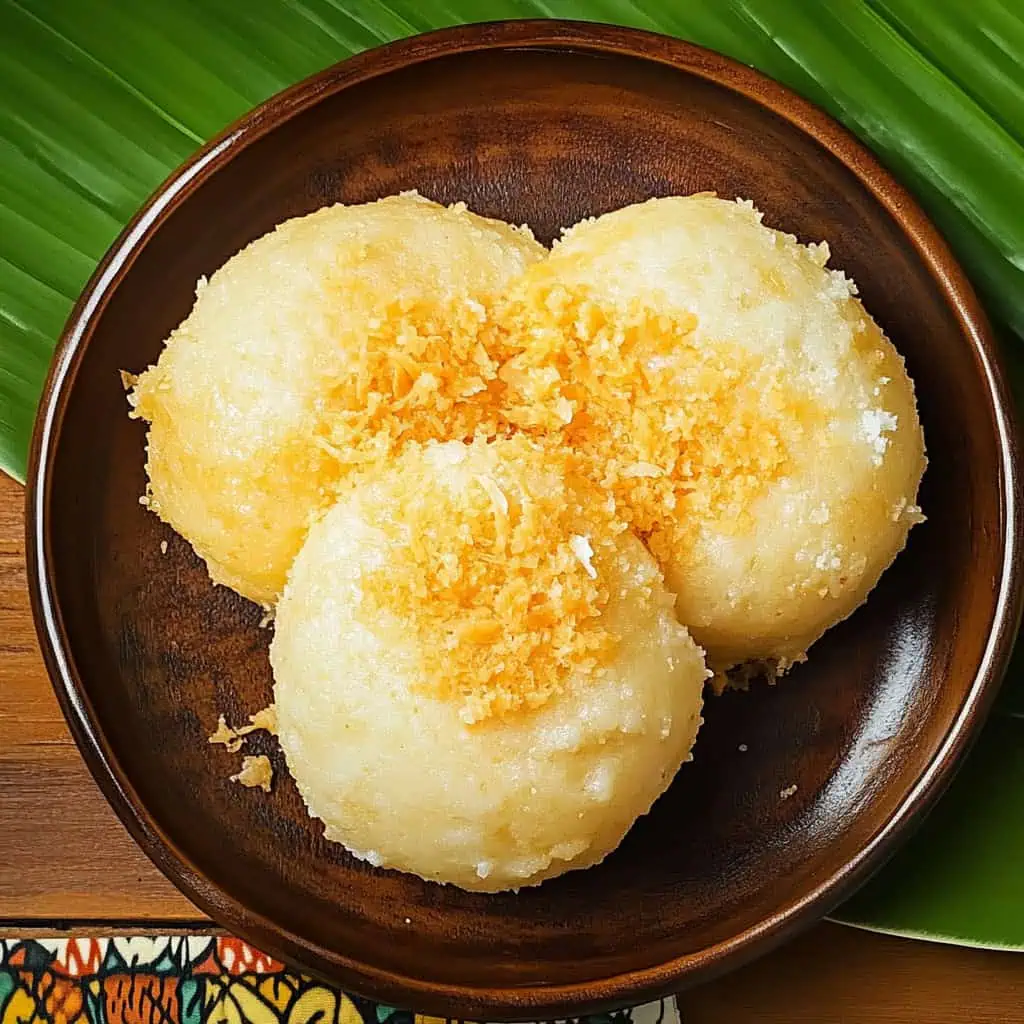
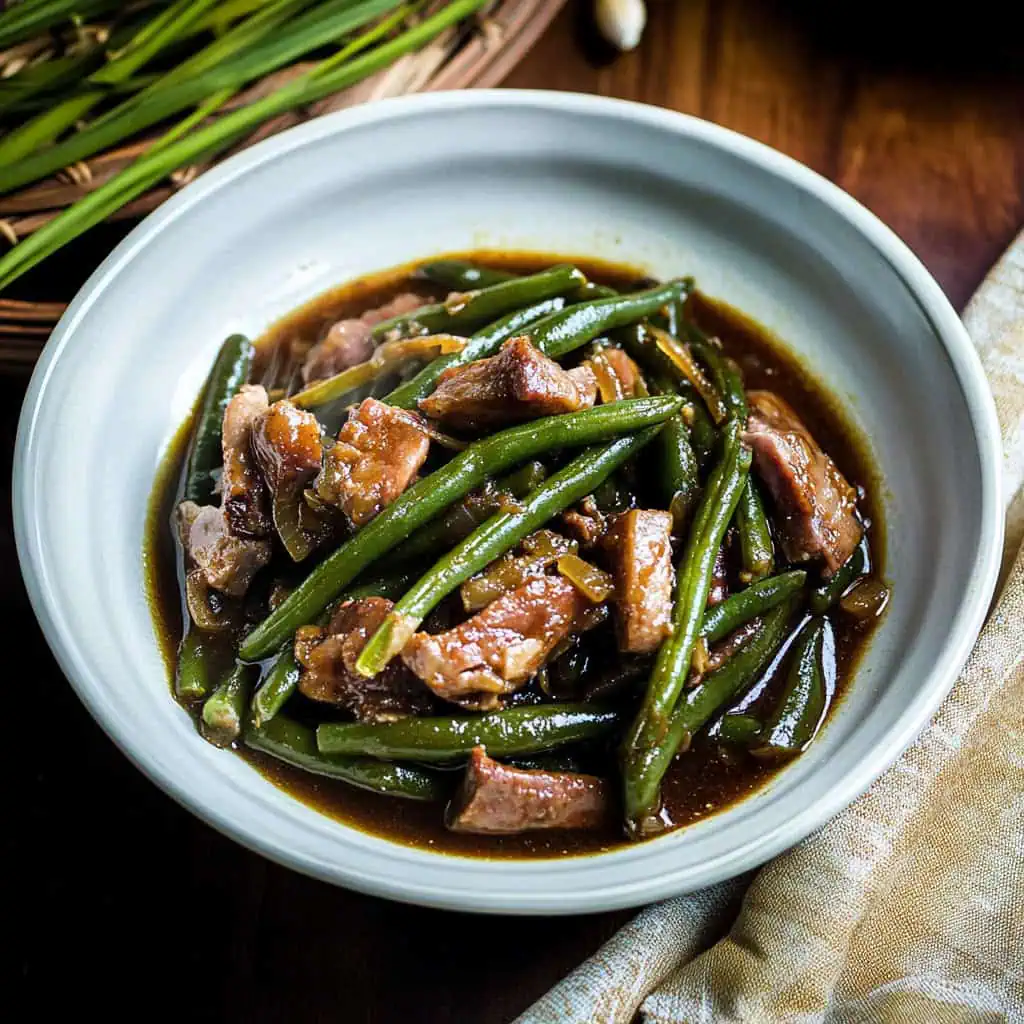

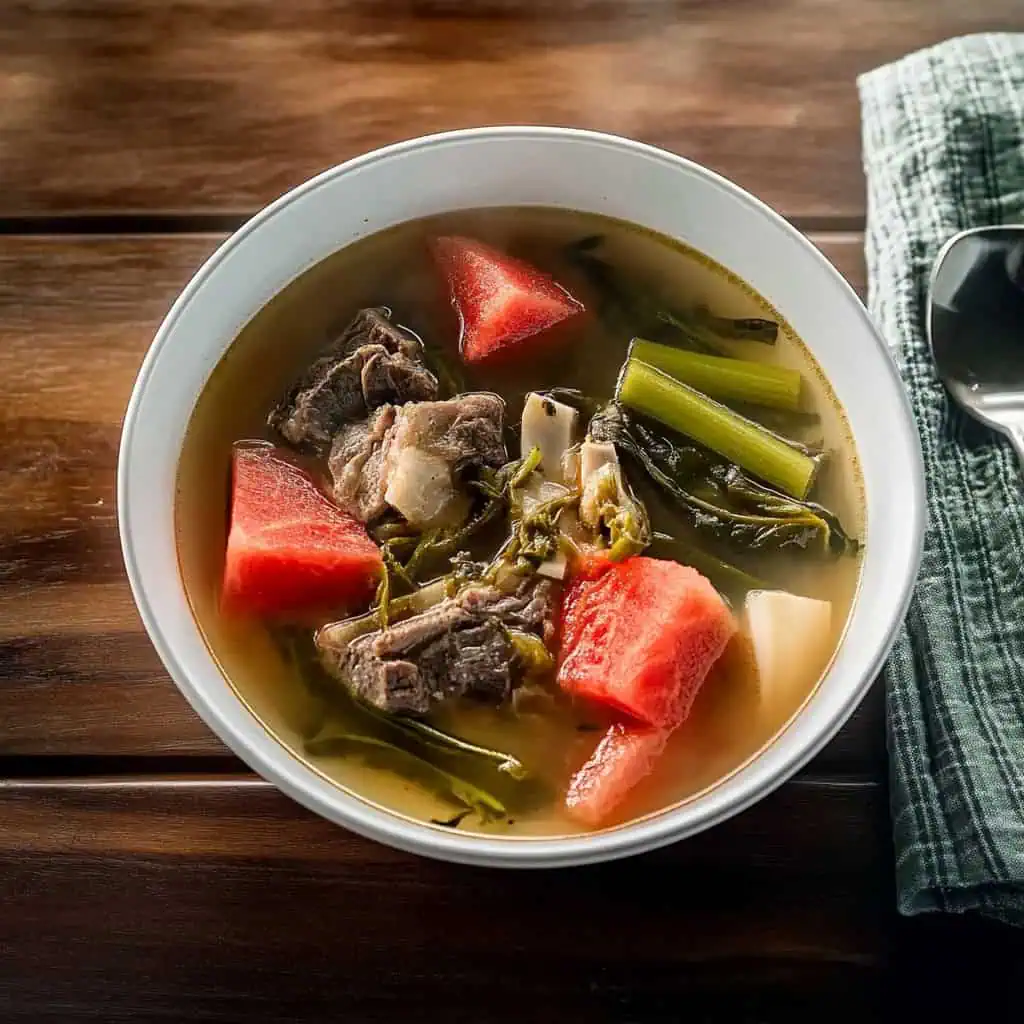

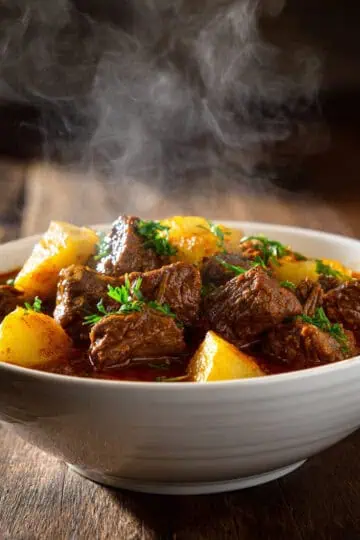


Comments
No Comments